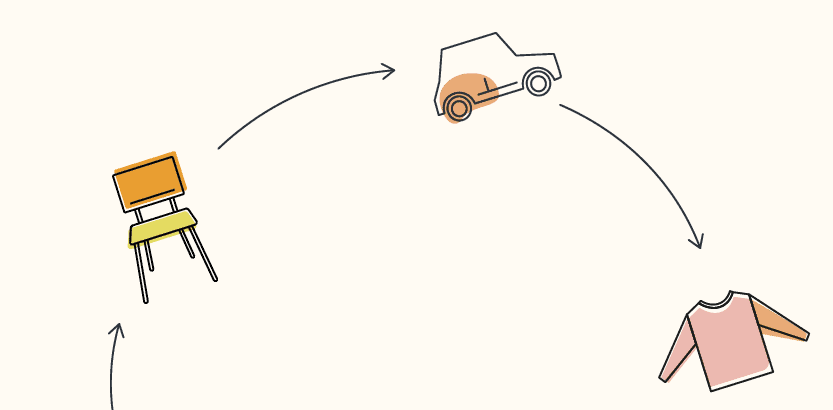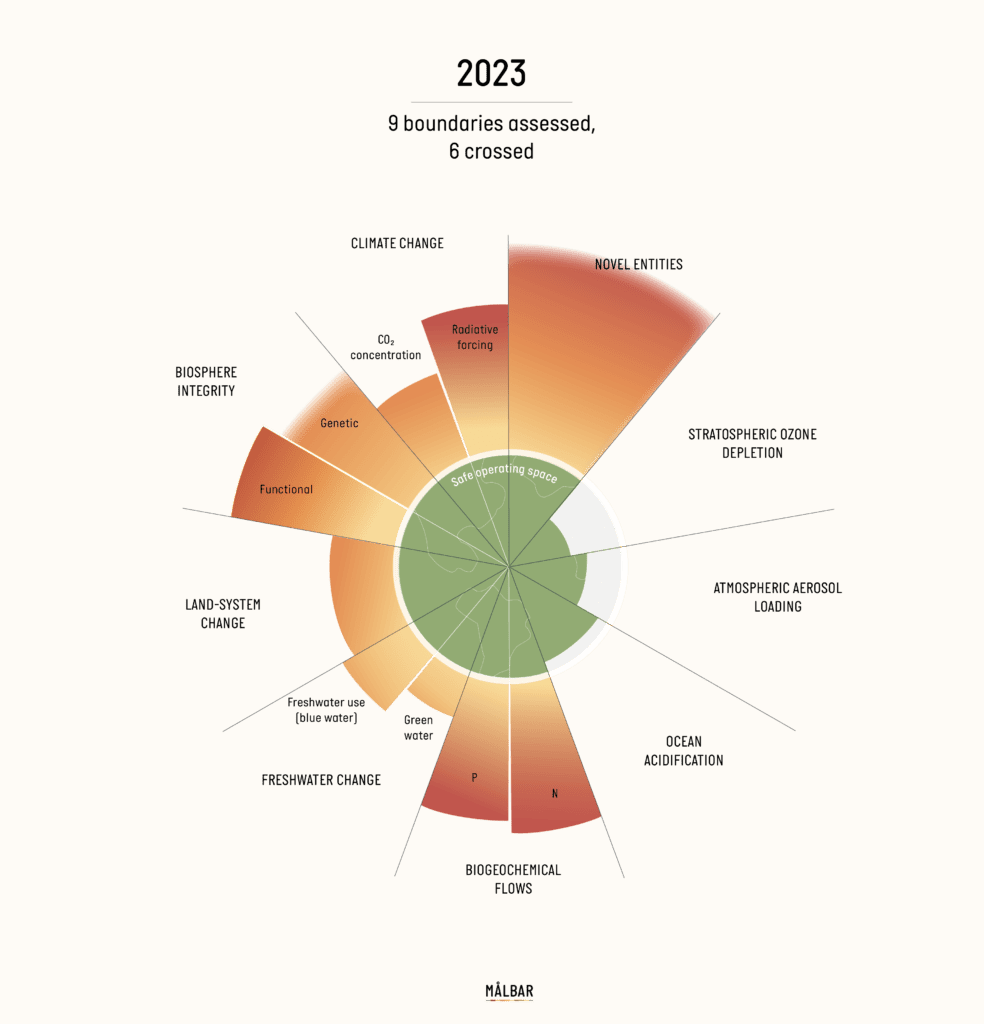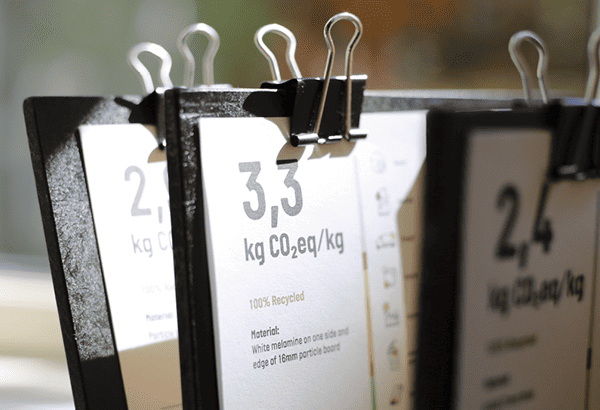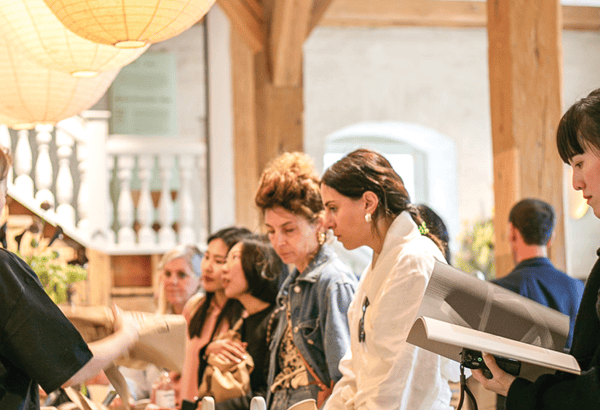
DTU studies shows that a sustainable lifestyle in Denmark is possible already now
What would life look like if Danish people lived within the limits of the planet?
According to research from DTU Sustain (Denmarks Technical University Sustain), it might not be as restrictive as many assume.
In a recent webinar hosted by DTU’s Centre for Absolute Sustainability, PhD researcher Teddy Serrano presented a lifestyle model that stays within the six critical planetary boundaries – and still allows room for comfort, consumption, and mobility.
At Målbar, we’re used to measuring the impact of individual products.
This kind of research is a reminder of the bigger picture: how it all adds up.
What is absolute sustainability
– and why does it matter for design?
When we talk about absolute sustainability, we talk about environmental limits that are not negotiable. These are physical boundaries set by nature – such as how much climate gas the atmosphere can absorb, how much land can be used without harming biodiversity, or how many nutrients – like nitrogen – ecosystems can handle.
Unlike relative improvements (e.g. “30% lower CO₂eq than the industry average”), absolute sustainability asks a different question:
Are we doing enough – not just better than before, but good enough to stay within the planet’s capacity?
This approach is increasingly relevant to Målbar’s way of working.

For us it’s no longer just about making a product “less bad” – it’s about understanding how your design decisions fit into a bigger system, and whether the final product keeps us within safe ecological limits.
DTU’s model focuses on the six planetary boundaries where we’re currently overshooting; climate change, biosphere integrity, land system change, freshwater change, and biochemical flows.
By focusing on calculation of a lifestyle’s impacts on these boundaries, researchers can define what a sustainable lifestyle might realistically look like – and what kinds of consumption patterns, and product lifespans it would involve.
This kind of thinking gives designers and stakeholders a new frame: instead of simply reducing impact, we can start by asking what level of impact is acceptable? And how can we meet human needs – for comfort, mobility, identity – within that space?
Planetary boundaries we’ve already exceeded
DTU’s research on absolute sustainability focuses on the six planetary boundaries where human activity has already pushed beyond safe limits:
- Climate change – CO₂ and other greenhouse gases are warming the planet faster than ecosystems can adapt.
- Biosphere integrity – Species are going extinct at rates far above natural background levels.
- Land-system change – Forests and natural habitats are being converted to farmland and urban areas.
- Biogeochemical flows – Excess nutrients (mainly nitrogen and phosphorus from agriculture) disrupt ecosystems.
- Freshwater change – Water use and pollution are destabilising freshwater systems.
- Novel entities (chemical pollution) – Synthetic substances like PFAS and other unnatural chemical compounds accumulate in nature with unknown long-term effects.
These boundaries are based on research from the Stockholm Resilience Centre, used by DTU to frame what a sustainable lifestyle might mean in practice.
![]()
What a sustainable lifestyle could include
Based on current data and forecasts, DTU’s calculations show that a sustainable life in Denmark – within the limits – could still include:
- Two small weekly portions of light meat
- 5,000 km of train travel per year
- 1,100 km of driving in an electric vehicle (e.g. for bad weather or family visits)
- 2 kg of new clothing per year
- 5 kg of new furniture per year
- A home where we live on less space – 4 people on 60m2.
In other words, this isn’t about a life of deprivation where our happiness is threatened – it is a life about being focused and conscious about what matters in life. That personal health, respect for all people and for animals and nature is part of staying happy and that this still leaves plenty of room for opportunities for self-fulfillment.

The complexity behind the numbers
Calculating the footprint of a “typical Danish lifestyle” turned out to be the hardest part of the model. Serrano explained that supply chains – especially for electronics – are long and complicated, making data unreliable. For air travel, the team had to build their own emissions model, because existing online calculators weren’t considered trustworthy.
Another challenging area was quantifying the impact of foreign chemical entities – where there is high uncertainty and limited data.
The hopeful takeaway
The most striking part of the presentation was this: It is possible. With structural and behavioral change, a lifestyle within planetary boundaries is already now achievable in Denmark. That living within the planet’s boundaries doesn’t mean going off-grid or giving up comfort – it’s already possible here and now.
And maybe that’s the real opportunity: rethinking what a “good life” means – not as sacrifice, but as a balance and as an inspiration for development.
At Målbar, we believe that better decisions start with better data. Research like this shows the value of being able to calculate the impacts of our consumption. The importance of harmonised calculation rules – and how even the most complex environmental questions can be made tangible when based on facts.


